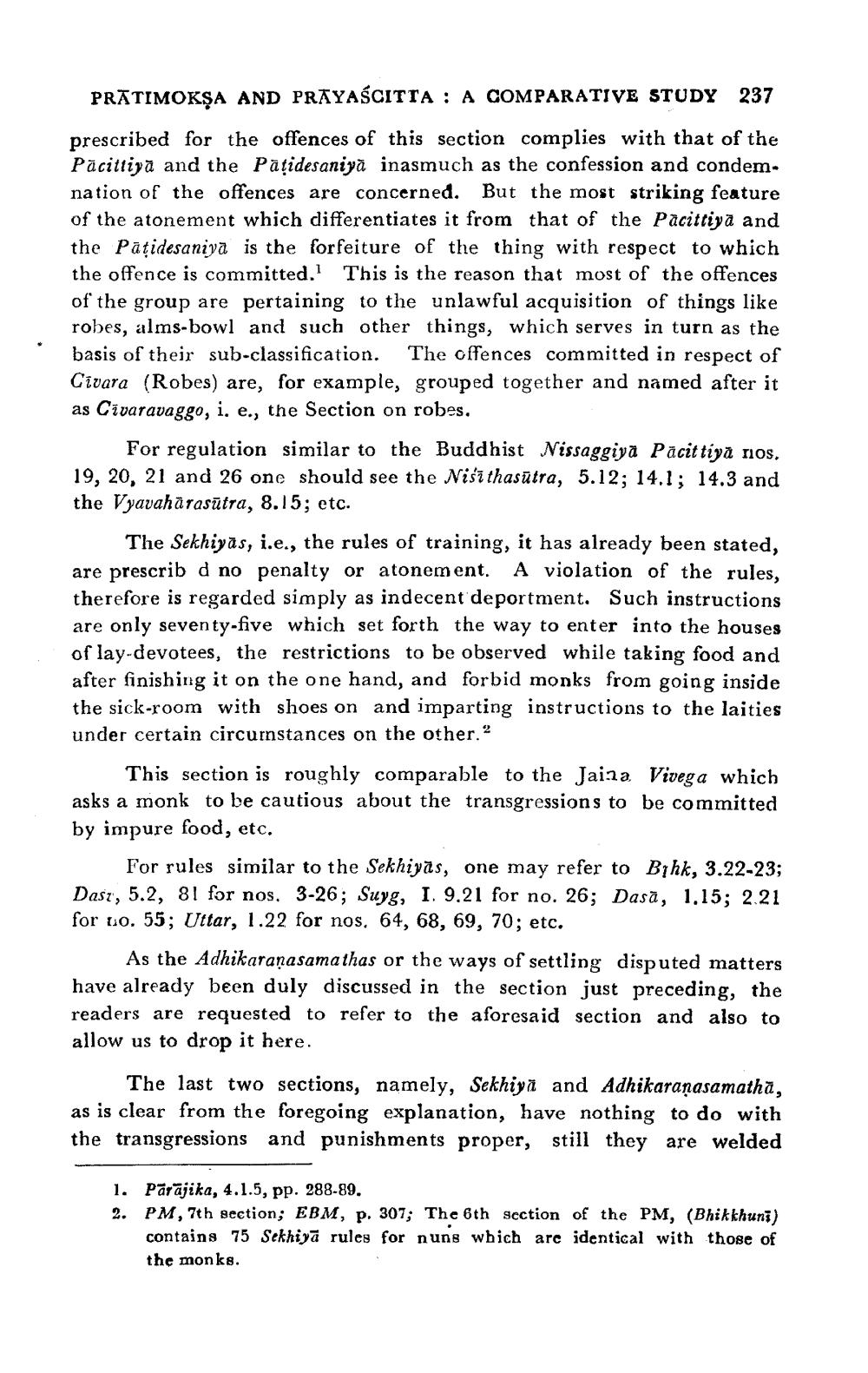________________
PRĀTIMOKŞA AND PRAYAŚCITTA : A COMPARATIVE STUDY 237
prescribed for the offences of this section complies with that of the Pacittiya and the Pațidesaniyā inasmuch as the confession and condem. nation of the offences are concerned. But the most striking feature of the atonement which differentiates it from that of the Pacittiya and the Patidesaniya is the forfeiture of the thing with respect to which the offence is committed. This is the reason that most of the offences of the group are pertaining to the unlawful acquisition of things like robes, alms-bowl and such other things, which serves in turn as the basis of their sub-classification. The offences committed in respect of Givara (Robes) are, for example, grouped together and named after it as Cīvaravaggo, i, e., the Section on robes.
For regulation similar to the Buddhist Nissaggiya Pacit tiya nios, 19, 20, 21 and 26 one should see the Nisi thasūtra, 5.12; 14.1; 14.3 and the Vyavaharasūtra, 8.15; etc.
The Sekhiyās, i.e., the rules of training, it has already been stated, are prescrib d no penalty or atonement. A violation of the rules, therefore is regarded simply as indecent deportment. Such instructions are only seventy-five which set forth the way to enter into the houses of lay-devotees, the restrictions to be observed while taking food and after finishing it on the one hand, and forbid monks from going inside the sick-room with shoes on and imparting instructions to the laities under certain circumstances on the other. 2
This section is roughly comparable to the Jaina Vivega which asks a monk to be cautious about the transgressions to be committed by impure food, etc.
For rules similar to the Sekhiyas, one may refer to Bihk, 3.22-23; Dası', 5.2, 81 for nos. 3-26; Suyg, I. 9.21 for no. 26; Dasā, 1.15; 2.21 for no. 55; Uttar, 1.22 for nos. 64, 68, 69, 70; etc.
As the Adhikaranasamathas or the ways of settling disputed matters have already been duly discussed in the section just preceding, the readers are requested to refer to the aforesaid section and also to allow us to drop it here.
The last two sections, namely, Sekhiya and Adhikaranasamatha, as is clear from the foregoing explanation, have nothing to do with the transgressions and punishments proper, still they are welded
1. Pārājika, 4.1.5, pp. 288-89. 2. PM, 7th section; EBM, p. 307; The 6th section of the PM, (Bhikkhuni)
contains 75 Sekhiyā rules for nuns which are identical with those of the monks.




